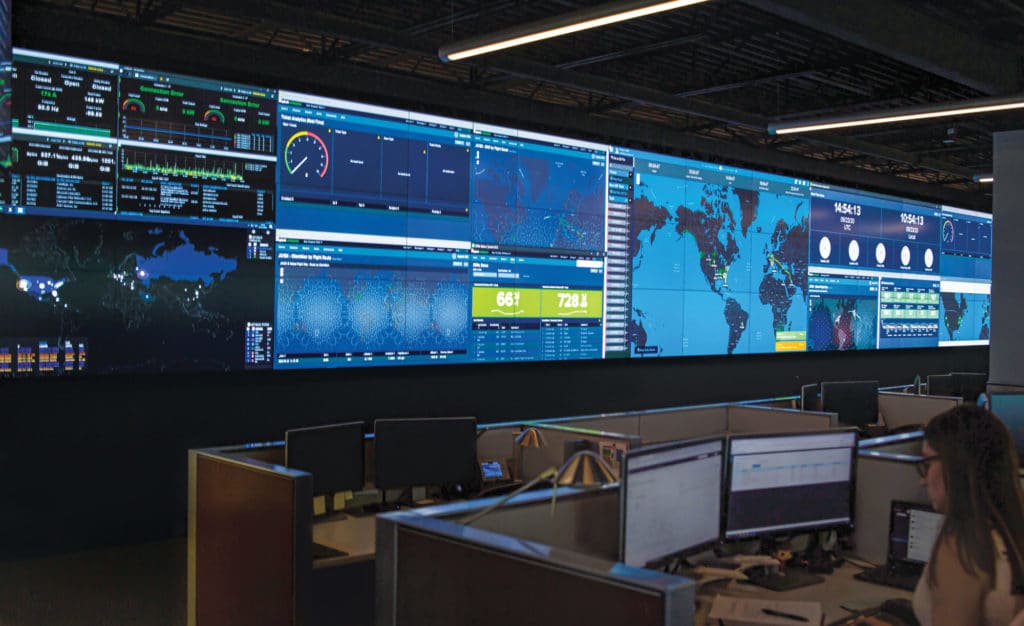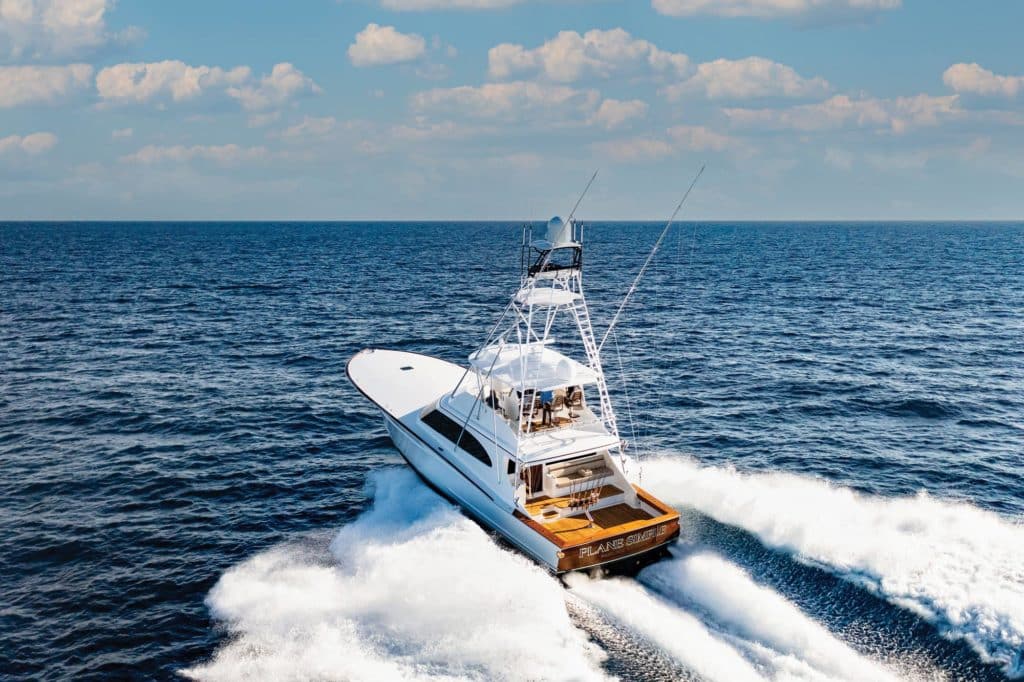
The hackers didn’t break into the 2018 European Business Aviation Convention and Exhibition. They were invited inside.
By whom? Satcom Direct, a Florida-based firm that specializes in hardware, software and end-to-end connectivity for the aviation and marine sectors.
The company welcomed what’s known as ethical, or “white hat,” hackers to its EBACE booth to create a trial by digital fire. The white hats publicly demonstrated the kinds of real-world cyber threats—including phishing, password deciphering and system compromise—that black-hat hackers pose. At the same time, Satcom Direct showcased its cybersecurity and threat-monitoring offerings.
Some attendees found themselves pondering just how secure their systems are. Jets, sport-fishing vessels and superyachts differ in design and capabilities, but people who own them want to transition from one to the next with reliable, secure connectivity. Virtual private networks can provide device-level protection for smartphones and personal computers ashore, but VPNs can cause speed bumps when used with satcom systems like the ones aboard yachts. The idea behind Satcom Direct’s recently expanded marine division is to simplify moving from one’s Gulfstream G800 to the Viking 80C while staying connected.
Satcom Direct was founded in Melbourne, Florida, in 1997, with the goal of creating a 10-digit, US-based phone number (called the Global One Number) that could reach a satellite phone in-flight, irrespective of latitude or longitude. Next, the company began innovating secure end-to-end communications solutions for the aviation, government, land-mobile and marine sectors.
A big piece came together in 2016, when Satcom Direct acquired COMSAT, the US government-formed corporation that helped create the International Telecommunications Satellite Consortium in 1964 and put the first geostationary commercial communications satellite into orbit in 1966. This acquisition included two satellite ground stations—one in Southbury, Connecticut, and the other in Santa Paula, California—that Satcom Direct uses to facilitate its end-to-end connectivity solutions.

Secure and reliable satellite communications depend on these ground-based networks and infrastructure. That’s why Satcom Direct also owns a 25,000-square-foot Tier 3 (it’s online almost constantly) data center in Melbourne, Florida, and internet points of presence, which serve as on-ramps for local traffic to join the internet. Satcom Direct connects clients to its land-based infrastructure via redundant, third-party land- and satellite-based links that the company uses to create a proprietary data and voice communications network (see sidebar). Satcom Direct monitors and maintains this network from its facilities in California, Connecticut and Florida.
“Satcom Direct is a data-management company,” says Michael Skou Christensen, the company’s chief commercial officer for private aviation and marine. He says there are four main pillars to the business: providing a communications link from a customer’s antenna to a satellite; providing hardware that enables this connectivity; providing software as a service; and providing the supporting infrastructure that allows Satcom Direct to control and securely route data from when it leaves a client’s vessel to its destination.
Satcom Direct offers three scalable levels of cyber protection. Level 1 has threat monitoring and mitigation, and includes an enterprise-level firewall, embedded antivirus software, and intrusion detection and prevention systems. Level 2 adds advanced-level encryption capabilities. Level 3 adds the company’s Private Network, which routes encrypted data back ashore without trafficking it over the public internet.
In March, Satcom Direct announced it was bolstering its marine division by creating new services for owners of private jets, sport-fishing vessels, and mega- and superyachts. The Marine Router and Marine Rack support its new service. The router creates a local area network (LAN) using cellular, Wi-Fi or satcom connectivity that onboard wireless devices join. The rack houses the router, provides uninterrupted power and switching, and lets owners scale their service.
Christensen says owners can achieve Level 1 and 2 using the Marine Router; Level 3 requires additional hardware and a data center. “We can send the data to a client’s own IT department,” he says, or clients can “let us handle the data.”
Either way, he adds, “The real power isn’t in the individual elements.” The system shines when aircraft and vessel networks “become one.”
What sets the router apart is “the transparency on the LAN and how it overlaps with the satellite link,” Christensen says. “It’s a powerful support tool for us, and for the captain and the crew. Instead of defending on a device level, we defend the yacht on an antenna level.”
This umbrella defense can be scaled to fit each owner’s needs.
“The difference between a sport-fishing vessel and a superyacht is a level of scalability,” Christensen says. “Sport-fishing vessels have [fewer] straight [data] requirements, as there are [fewer] people on board. With superyachts, the complexity keeps going up, with more users.”
Christensen says clients are increasingly adopting Level 3 protection. But, as with many things yacht-related, the solutions are not one-size-fits-all kits. “We’ll help you design the right system,” Christensen says.
So, if you cruise from your office to your Nordhavn or Viking in your private jet, check out Satcom Direct. Odds are good this company can help keep your ones and zeros flowing while keeping hackers of all hat colors isolated and ashore.
Satellite Agnosticism
While Satcom Direct owns terrestrial infrastructure and facilities, it works with satellite providers—including Intelsat, Inmarsat, Viasat and Iridium—as an airtime reseller. This long-standing setup allows the company to focus on creating hardware and software solutions on the router and rack level while giving customers maximum network and hardware flexibility









